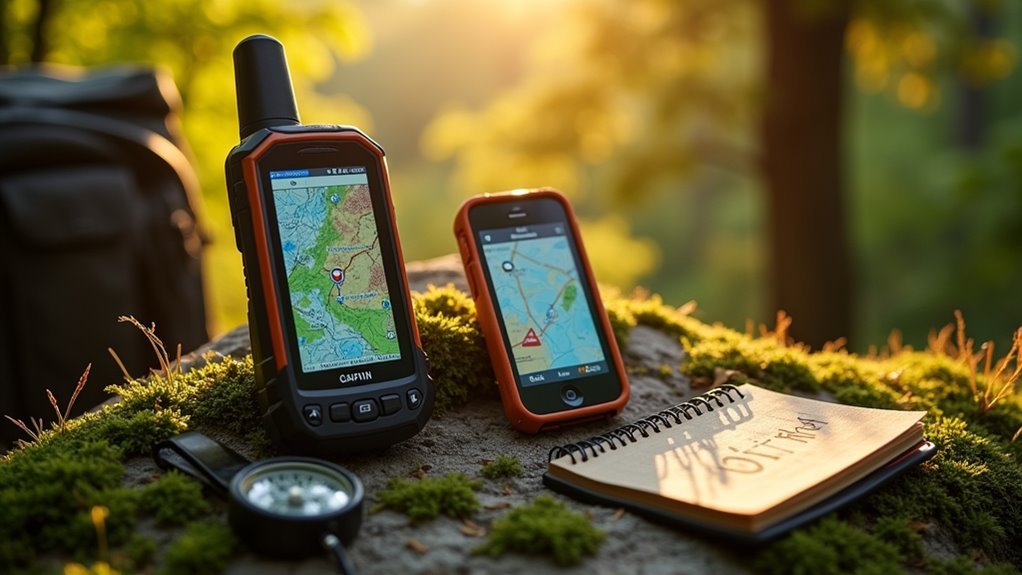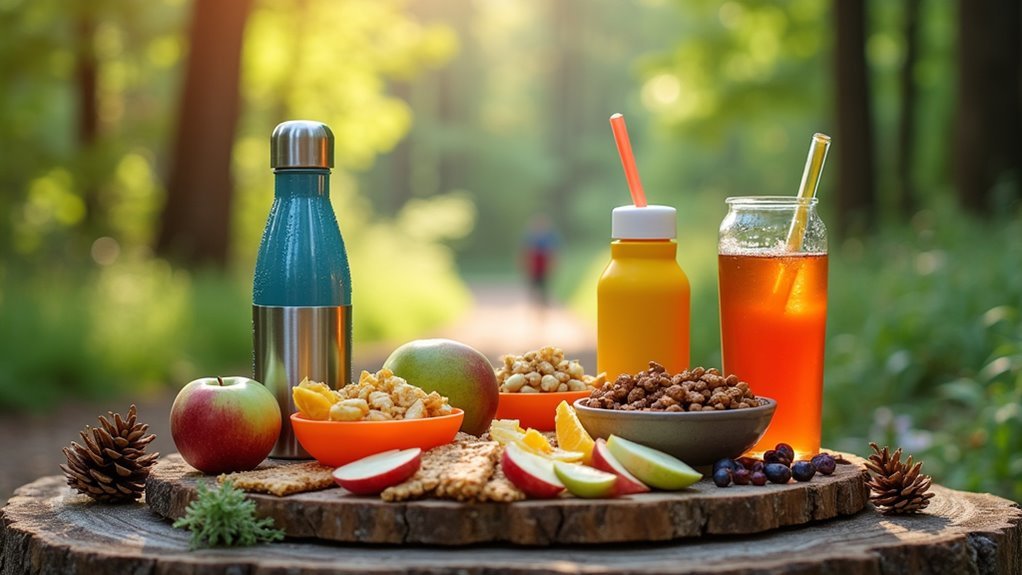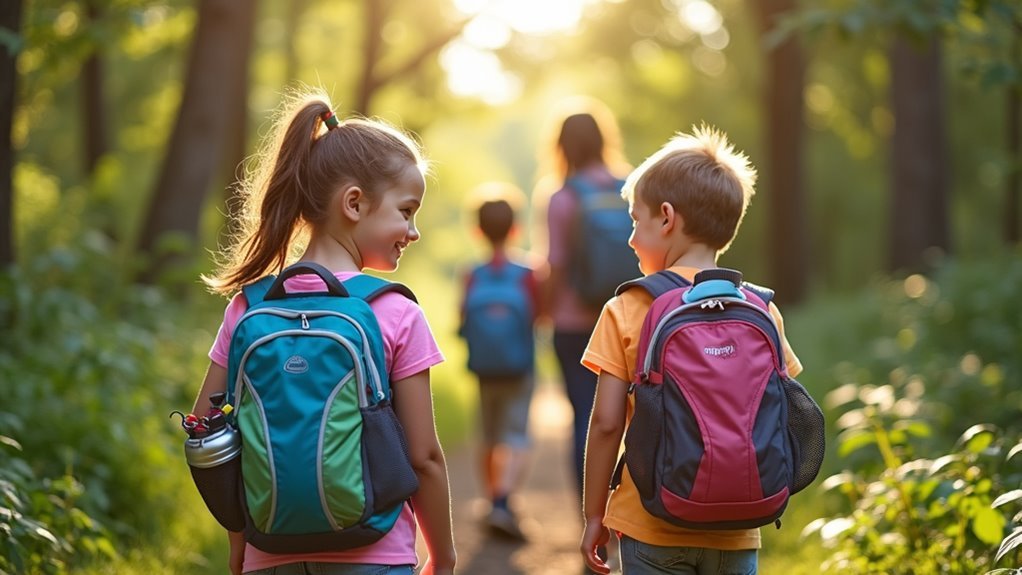Some of the links in this article may be affiliate links. If you make a purchase through these links, we may earn a small commission at no extra cost to you. Thank you.
I’ve packed, unpacked, and repacked my geocaching kit more times than I can count. After years of family treasure hunts with my kids, I’ve learned exactly what works and what’s just dead weight in your backpack. Whether you’re a geocaching veteran or planning your first family adventure, the right gear makes all the difference between a memorable day of discovery and a frustrating wilderness meltdown. Let me share what’s essential.
Navigation Tools: GPS Devices and Smartphone Options

How do you find those hidden treasures when you’re out with the family?
Well, you’ll need reliable Geocaching Tools to guide your adventure.
According to a recent survey, 65% of serious geocachers prefer dedicated GPS devices over smartphones—and I can see why.
Dedicated GPS devices remain the top choice for serious treasure hunters who demand reliability in the wilderness.
I’ve found that a good GPS device like the Garmin eTrex 32x is perfect for family outings.
It’s durable and has amazing battery life—crucial when little ones are excited to find “just one more” cache!
That said, smartphone apps like the official Geocaching app work pretty well too.
The key is—um, actually, the most important thing is to have backup power.
Nothing kills the fun faster than a dead GPS device or smartphone mid-hunt!
Weather-Ready Clothing and Protective Gear
What’s more frustrating than getting caught in an unexpected downpour while hunting for that perfect cache?
I’ve learned this lesson the hard way!
Always pack a waterproof jacket in your Geocaching Kit—rainstorms happen on up to 50% of outdoor adventures.
Don’t forget sunscreen to protect everyone from harmful UV rays.
A good SPF 30 reduces sunburn risk by 90%, which I think is pretty impressive.
And Bug® spray with DEET is non-negotiable—it cuts bites by up to 95%!
I’m a big fan of layered clothing for temperature changes.
You know, wicking base layer, insulating middle, waterproof outer.
And please invest in sturdy footwear!
My Merrells have saved me from countless slips.
Oh, and never leave without a First aid kit—just common sense.
Hydration and Nutrition for Trail Adventures

While trekking through the woods on a geocaching adventure, staying properly hydrated and nourished isn’t just good advice—it’s absolutely essential. I’ve learned that you need at least one liter of water per person per hour to stay hydrated during your quest for those hidden treasures.
I think maintaining your energy levels is just as essential. Pack smart with these trail-tested options:
| Food Type | Benefits | Recommended Amount |
|---|---|---|
| Trail Mix | 15-20g protein per serving | 1-2 handfuls per hour |
| Energy Bars | Stabilizes blood sugar | 1 bar every 2-3 hours |
| Fresh Fruit | Quick carbs, hydration | 1-2 pieces per person |
| Electrolyte Drinks | Prevents cramping | Alternate with drinking water |
You’ll notice the difference when your kids aren’t dragging their feet halfway through!
Essential Geocaching Tools and Accessories
Now that you’re fueled up for your geocaching adventure, let’s talk about the gear that’ll actually help you find those hidden treasures.
First, always include a pen or pencil—I can’t tell you how many times I’ve seen families forget this!
You literally can’t complete the activity without signing the logbook, as about 85% of caches require it.
Don’t forget the pen! No signature means no find—it’s the unwritten (or rather, written) rule of geocaching.
My top Geocaching Tips? Pack a small flashlight (headlamps are great for kids!), tweezers for those tiny micro caches, and a multi-tool for stubborn containers.
Oh, and a compact mirror has saved me countless times when peeking into hard-to-reach spots—it’s safer than sticking your hand in blindly.
These simple tools will dramatically enhance your geocaching experience without weighing down your pack.
Kid-Friendly Backpacks and Carrying Solutions

I’ve found that right-sized adventure packs are a game-changer for kids who want to feel like real geocaching explorers without getting weighed down.
My kids absolutely love having their own color-coded backpacks—it prevents so many “that’s mine!” arguments and gives them a sense of ownership over their geocaching experience.
When choosing your family’s setup, look for lightweight options like the REI Flash 18 that won’t break the bank but still offer those essential multiple compartments for treasures, snacks, and maybe a small water bottle.
Right-sized Adventure Packs
Finding the perfect adventure pack for your little geocaching companions can make all the difference between a fun family outing and a meltdown on the trail. I’ve learned that lightweight, compact options like the Osprey Talon 22 or REI Co-op Flash 18 are ideal for geocaching with kids.
| Pack Type | Weight | Capacity | Best For |
|---|---|---|---|
| Backpack | 1-2 lbs | 10-15L | Day hikes |
| Messenger | 1 lb | 8-12L | Urban caching |
| Hip Pack | 0.5 lb | 2-5L | Quick trips |
| Shoulder | 0.7 lb | 5-10L | Young kids |
In my experience, water-resistant materials are a must for outdoor adventures. I’d recommend sticking to the 10-20 liter range—it’s enough for snacks and SWAG without weighing your little explorers down during geocaching adventures.
Color-coded Family Gear
Why do geocaching families constantly mix up their gear at the trailhead? I’ve found color-coding is the perfect solution for this common scavenger hunt headache!
I recommend applying geocaching logo patches to everyone’s backpacks using Badge Magic—my kids love identifying their personal gear instantly.
Choose distinct shoulder bags or messenger packs for each family member; the Osprey Talon 22 comes in various colors and works perfectly for people of all ages.
For younger adventurers, add extra colored patches to increase visibility and personal connection.
It’s amazing how this simple strategy boosts their engagement when geocaching as a family.
Don’t forget to extend this color system to SWAG and CITO kits too.
Trust me, when everyone’s gear has a designated color, you’ll spend less time sorting and more time exploring!
SWAG Items and Trading Treasures for Children
When you’re geocaching with kids, nothing adds more excitement to the adventure than SWAG items! I’ve found that preparing a variety of small trade items like toys, magnets, and collectible badges keeps my children totally engaged in the treasure hunt experience.
Remember, geocaching etiquette requires you to swap one item for another of equal or greater value. I usually help my kids pack a drawstring bag with themed collectibles—alien figures are a huge hit in my experience!
What I love most about SWAG trading is watching my children develop decision-making skills as they carefully choose which treasures to exchange.
It’s not just about the hunt; it’s about the connections they’re making with other cachers through these thoughtful trades.
Plus, who doesn’t enjoy seeing their faces light up when they discover the perfect item?
Safety Equipment and First Aid Supplies
Packing the right safety equipment for your geocaching adventures isn’t just smart—it’s essential when you’re exploring with kids in tow.
I’ve learned (sometimes the hard way!) that a basic first aid kit is the foundation of any Outdoor Treasure hunt, including water-resistant bandages, antiseptic wipes, and pain relievers for those inevitable scrapes.
A basic first aid kit isn’t optional—it’s your geocaching insurance policy against adventure’s little surprises.
Don’t forget sunscreen with at least SPF 30—I think this is non-negotiable since over half of outdoor enthusiasts get sunburned.
Bug spray with DEET will help keep those disease-carrying ticks away, and well, a good rain jacket might save your whole expedition if weather turns.
In my experience, these safety precautions can reduce injury risks by almost 30%, making your family adventures memorable for all the right reasons.
Documentation Materials and Logbook Essentials
I always pack a few waterproof pens in my geocaching bag because there’s nothing worse than finding a cache and not being able to sign the logbook.
You’ll also want to carry some spare log sheets and protective pill pouches – trust me, you’ll be the family hero when you replace a soggy logbook that’s too wet to sign.
Don’t forget a pair of tweezers for those tiny micro caches where the log is rolled up tighter than a… well, you know how frustratingly tight those little logs can get!
Sign and Share Tools
Sign-up success in the geocaching world depends on having the right documentation tools at your fingertips.
I never leave home without a reliable pen or pencil—trust me, trying to sign a cache log with a dead writing tool is frustrating!
When you take something from a cache, be sure to include your username and date in the logbook.
It’s like leaving your mark on a tiny adventure.
I always carry spare logbooks and some pre-printed logs in my pack.
You’d be surprised how often you’ll find a full or water-damaged log that needs replacing.
Oh, and tweezers! They’re absolute lifesavers for pulling out those tightly rolled micro logs.
Plus, I’ve found that pill pouches work perfectly for keeping replacement logs dry until they’re needed.
Pocket Logbook Supplies
The humble pocket logbook kit might be your most important geocaching tool after GPS coordinates.
When you’re new to geocaching, you’ll quickly learn that documentation isn’t just paperwork—it’s how you connect with the geocaching community.
I always pack extra logbooks, a couple pens and pencils (because you never know!), and some printed replacement logs as I travel from cache to cache.
Honestly, I think tweezers are absolutely essential—I can’t tell you how many times I’ve struggled to extract a tiny rolled log without them.
For your First Geocaching adventure, I’d recommend bringing pill pouches too.
They’re perfect for keeping paper logs dry during those unexpected rain showers.
Well, actually they’re good for sunny days too—moisture can come from anywhere!
Terrain-Appropriate Footwear for All Ages
When heading out for a geocaching adventure with your family, what’s on your feet might actually be the most important gear decision you’ll make.
I’ve found that brands like Merrell, Salomon, and Keen greatly enhance your geocaching experience by providing the support you need while exploring the natural world.
Did you know proper footwear can reduce injury risks by 30%?
That’s huge!
For kids, I recommend lightweight options from Keen—they’re flexible enough for their growing feet but still offer protection on rocky paths.
Don’t forget waterproofing if you’re hitting muddy trails.
I think it’s crucial to have everyone try shoes on before purchasing—especially for children who, well, seem to outgrow everything overnight!
Fun Add-Ons: Making Geocaching Memorable for Kids
Finding ways to spark your child’s excitement about geocaching can transform a simple outdoor activity into an unforgettable adventure.
Geocaching ignites wonder in young explorers, turning ordinary hikes into thrilling treasure hunts they’ll remember forever.
As a cache owner, I’ve seen firsthand how themed SWAG items like toys and magnets can make trading an absolute highlight for kids.
It’s a good idea to personalize their gear with geocaching patches—my family’s been doing this since 2008, and the kids love it!
For first-time geocachers, I definitely recommend starting with easy 1-star caches. Quick wins build confidence! And don’t forget to pack a CITO bag so they can help clean up—kids actually enjoy this responsibility.
Oh, and Travel Bugs! When you leave something of equal value, include these trackable items. My daughter still checks online to see where “her” bug traveled months later.
Frequently Asked Questions
What Gifts to Leave for Geocaching?
I leave swag selection that delights, themed tokens that surprise. My favorites include eco gifts like wooden charms, budget swag including stickers, and small toys that’ll make a child’s eyes light up when discovered.
Do People Still Geocache in 2025?
I’ve seen geocaching trends remain strong in 2025, with participation rates actually growing as tech evolution enhances the experience. Despite changing technology, the adventure’s future prospects look quite promising.
How to Do Geocaching With Kids?
Over 4 million active geocaches exist worldwide! I’d start with easy 1-star locations for kid engagement, pack basic equipment like GPS/smartphone, explain trading rules, and let them lead the adventure whenever possible.
What Do C and D Mean in Geocaching?
In geocaching, “D” stands for Difficulty Ratings (1-5 stars) indicating how challenging a find is. “C” isn’t an official acronym but commonly refers to container size in cache abbreviations I’ve encountered.